1. Joya no Kane at Zuiganji Temple
瑞巌寺の除夜の鐘・火鈴
January 1
Matsushima, Miyagi
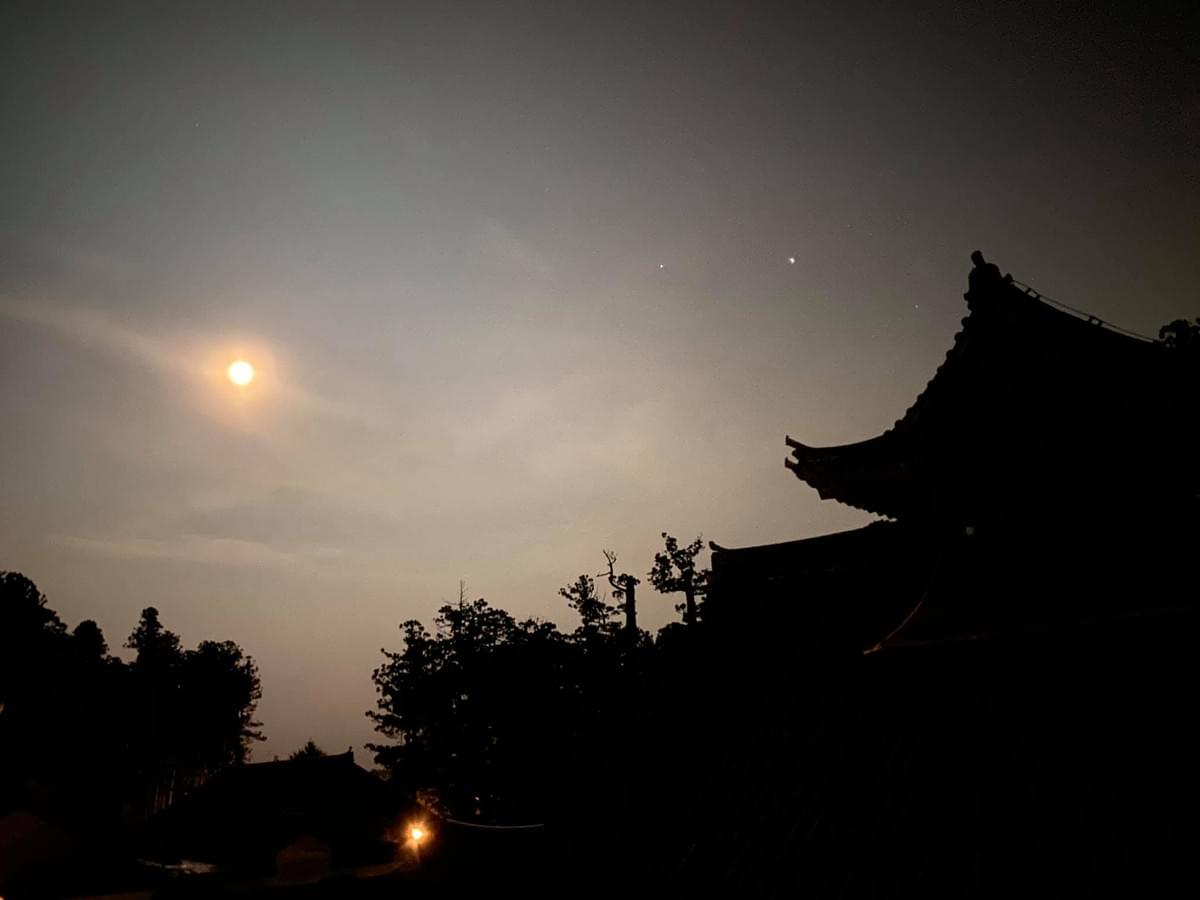
Joya no kane is a Buddhist New Year's tradition in which a temple bell is struck 108 times, a ritual said to sweep away all the desires that have accumulated over the course of the year. Zuiganji Temple offers a variation of this tradition where, instead of the monks doing the ringing and visitors just listening, visitors to the temple on New Year's are invited to ring the bell themselves!
Joya no kane hours: 21:00 December 31–4:00 January 1
Admission: New Year's events are free. If you want to visit the temple for regular sightseeing, it's
¥700 adults, ¥400 children ages 15 & under
Reservations: None needed
Event details: miyagi-kankou.or.jp
Temple details (English): visitmiyagi.com
Location: Zuiganji Temple (瑞巌寺). Map here.
Access: 10-minute walk from Matsushimakaigan Station
2. Goma & hatsumode at Yanaizu Kokuzouson
柳津虚空蔵尊初詣特別詣願祭
January 1 (also 2–12)
Tome, Miyagi
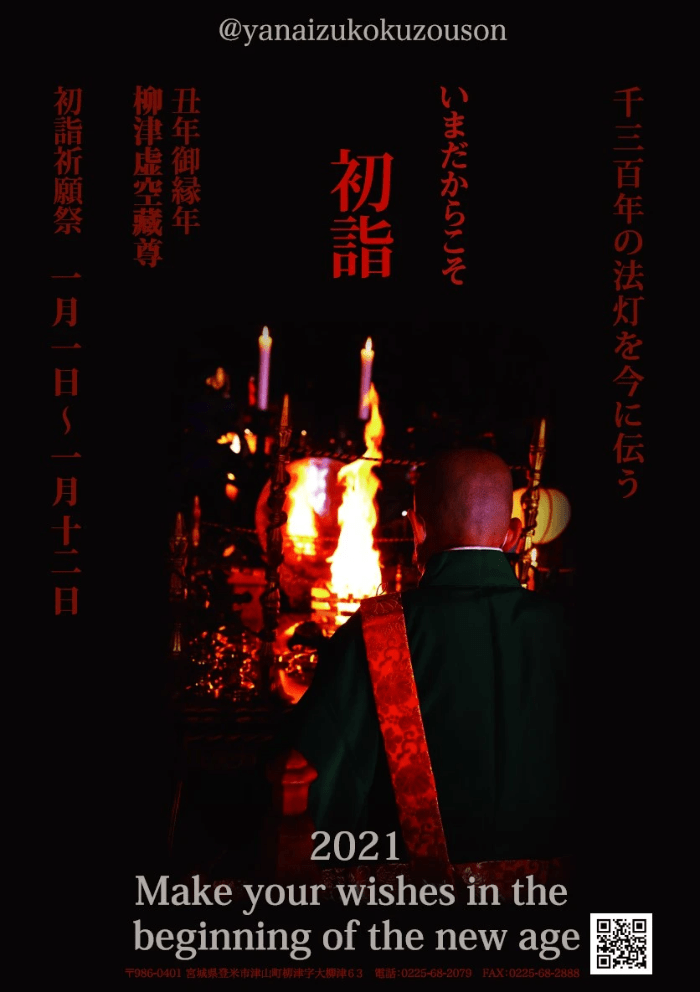
Yanaizu Kokuzouson is temple in northern Miyagi, said to be one of Japan's Three Great Kokuzo Temples. Head there for an unforgettable New Year's where, at the stroke of midnight, the temple will come ablaze with the light of a holy fire, where monks will perform goma, a mystical Buddhist ritual in which in which cedar sticks with prayers written on them are burned in supplication to a deity. Visitors are of course invited write a prayer of their own and have it offered up to the gods as part of the ritual.
Though the biggest goma will take place in the predawn hours New Year's Day the temple will also be performing smaller goma rituals several times daily through January 12.
Time: The New Year's goma fire will begin at midnight on January 1. January 2–12, goma fires will take place on the hour 8:00–17:00. The large goma fire is at noon each day.
Admission: Free. Goma prayer sticks start at ¥3,000.
Event details: kokuzoson.or.jp/aoi
Temple website: kokusozon.or.jp
Location: Yanaizu Kokuzouson Temple (柳津虚空蔵尊). Map here.
Access: 3.6 kilometers from Yanaizu Station by rental cycle, taxi, or on foot.
3. Yakurai Gantan Tozan Sunrise Hike
やくらい元旦登山
January 1
Kami, Miyagi
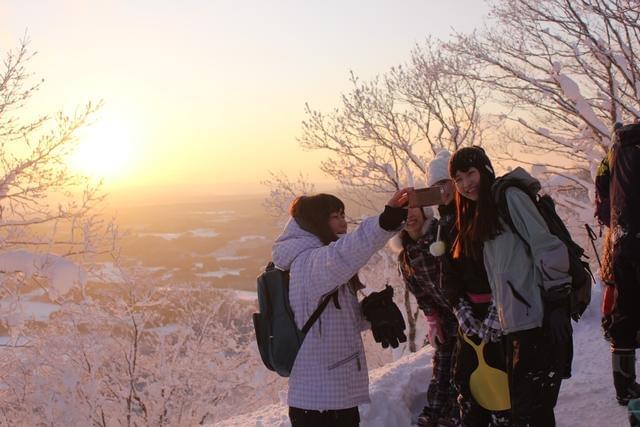
Hatsuhinode is the Japanese tradition of celebrating the first sunrise of the new year by viewing it from a scenic or significant location. A surprisingly popular way to celebrate is by watching the sunrise from the top of a mountain. To do that on larger mountains requires an overnight stay and a lot of planning, so many people opt to hike a smaller mountain instead, hitting the trail in the wee hours of morning to make it to the summit by sunrise. Join in at Mount Yakurai, one of the most popular hatsuhinode mountains Miyagi!
Due to concern over coronavirus, there won't be any memorial goods or oshiruko giveaways this year, but everyone is still welcome to climb.
Hours: At sunrise, but you'll need to arrive earlier in order to make it to the summit in time
Admission: Free
Details: town.kami.miyagi.jp
Location: Mount Yakurai ( 薬萊山). Map here.
4. Kinga Shinnen celebration at Numajiri Skijo
謹賀新年
January 1
Inawashiro, Fukushima
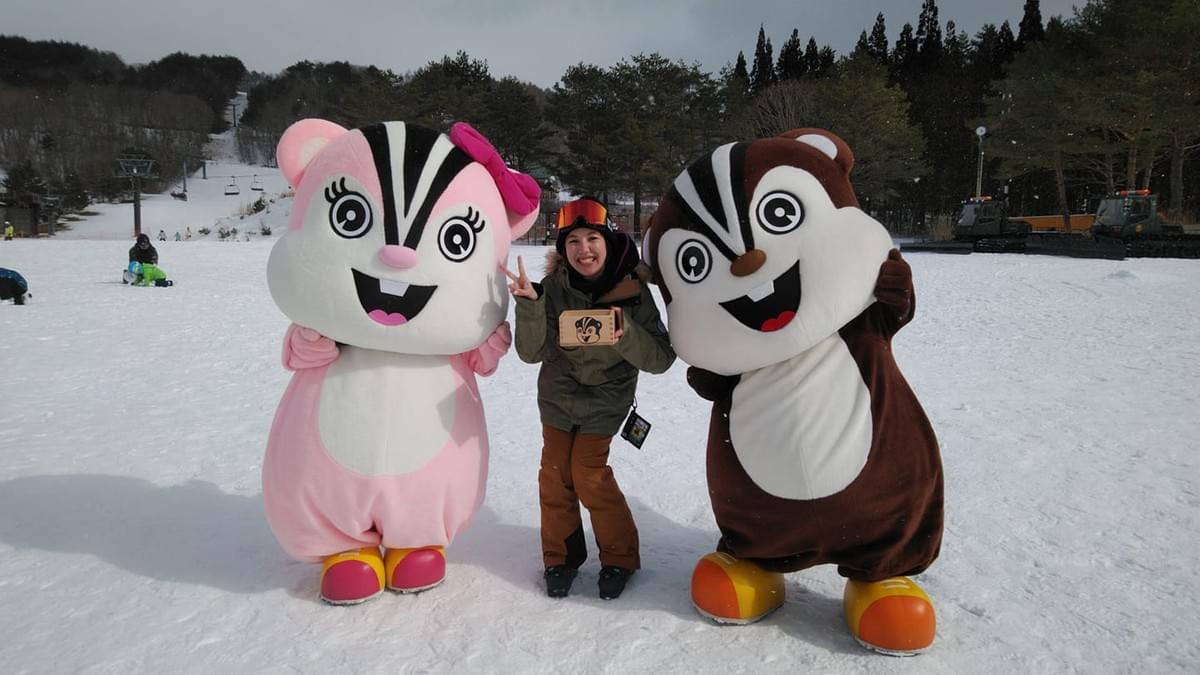
Opened in 1915, Numajiri Skijo is said to be the oldest currently-operating ski resort in Japan. The park has kept up with the times, regularly updating their equipment and adding new features, including a terrain park. To help everyone kick off 2021 on a positive note, the skijo will be hosting a kagami biraki ceremony, after which free sake and tonjiru soup will be passed out.
Fee: Free. Lift tickets cost extra.
Details: numajiri-ski.jp
Location: Numajiri Skijo (沼尻スキー場). Map here.
Access: About 30 minutes by bus from Inawashiro Station (猪苗代駅), followed by a 50-minute walk. Board bus bound for Nakanozawa (中ノ沢) , alight at Nakanozawa Hoikusho-mae (中の沢保育所前) or Nakanozawa Onsen (中の沢温泉) bus stop (The Hoikusho-mae bus stop is closer, but we're having trouble finding it on any bus timetables. If you go by bus and can confirm this stop really exists, please let us know!). Bus route map here, timetables here.
5. Takekoma Shrine Hatsumode
竹駒神社 初詣
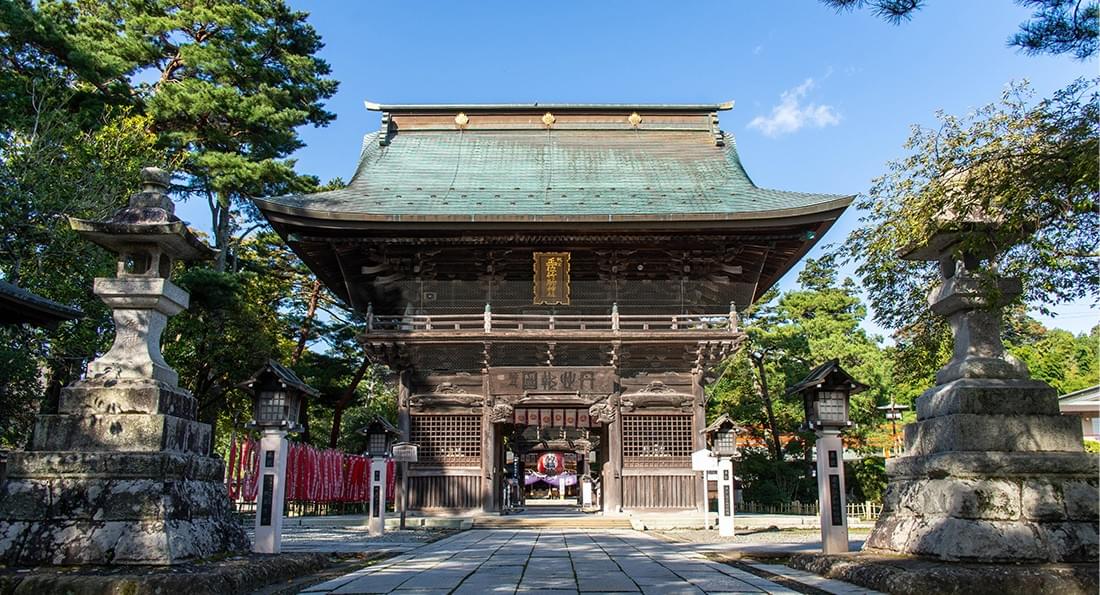
Hatsumode is the Japanese tradition of paying a visit to a shrine within the first few days of the new year to pray for good fortune in the coming year. You can do hatsumode at any shrine, but why not make an extra-special occasion out of it by visiting an extra-special shrine? Takekoma Shrine is said to be one of Japan's Three Great Inari Shrines, and is known as an especially auspicious place to pray for prosperous business and good harvests.
Hours: Always open
Admission: Free
Official shrine website: takekomajinja.jp
Location: Takekoma Shrine (竹駒神社). Map here.
Access: 11-minute walk from Iwanuma Station
6. A Mangattan New Year's
マンガッタンお正月
January 1–2
Ishinomaki, Miyagi
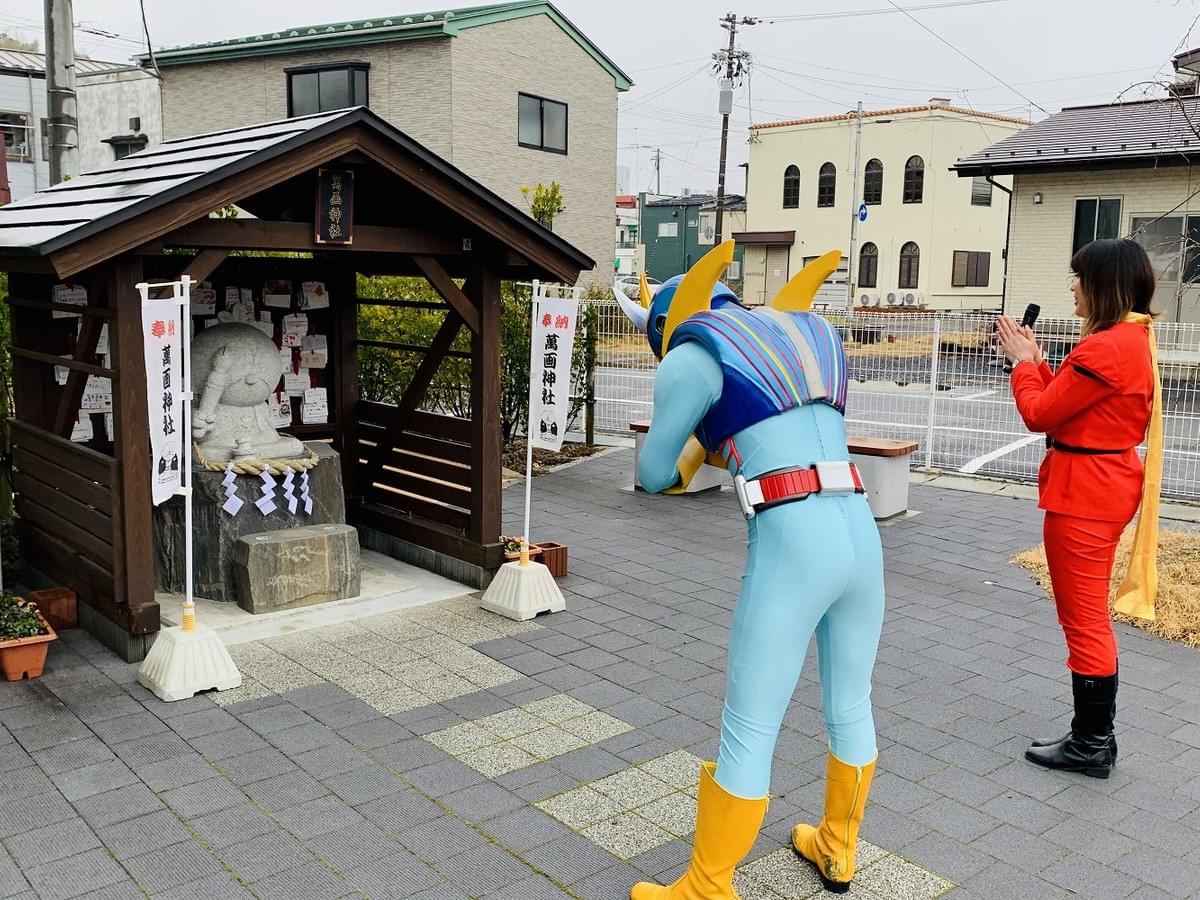
Unlike many museums and tourist attractions in Japan which close down for the New Year's holiday, the Ishinomaki Mangattan Museum takes the opposite approach: not only staying open, but also hosting its own quirky New Year's celebration! The festivities include a good variety of all-ages fun, from carnival games to a kite flying tournament to fukubukuro sales.
The most unique part of the event has got to be the otaku-fied twist on hatsumode: From December 26 to January 10, visitors to the museum are invited to write a wish on an ema (a small wooden prayer board), which the museum collects. Then, on January 11, local superhero Sea Jetter Kaito will deliver the ema to Manga Jinja, along with a prayer to the enshrined deity, "King of Manga" Ishinomori Shotaro.
Hours: 9:00–17:00. Exact time varies by activity.
Admission: Free, but there is a fee for some activities.
Details: mangattan.jp
Location: Ishinomaki Mangattan Museum (石ノ森萬画館). Map here.
Access: 15-minute walk from Ishinomaki Station
7. Stardust Pageant Umihotaru
スターダスト・ページェント「海ほたる」
Through January 5
Onagawa, Miyagi
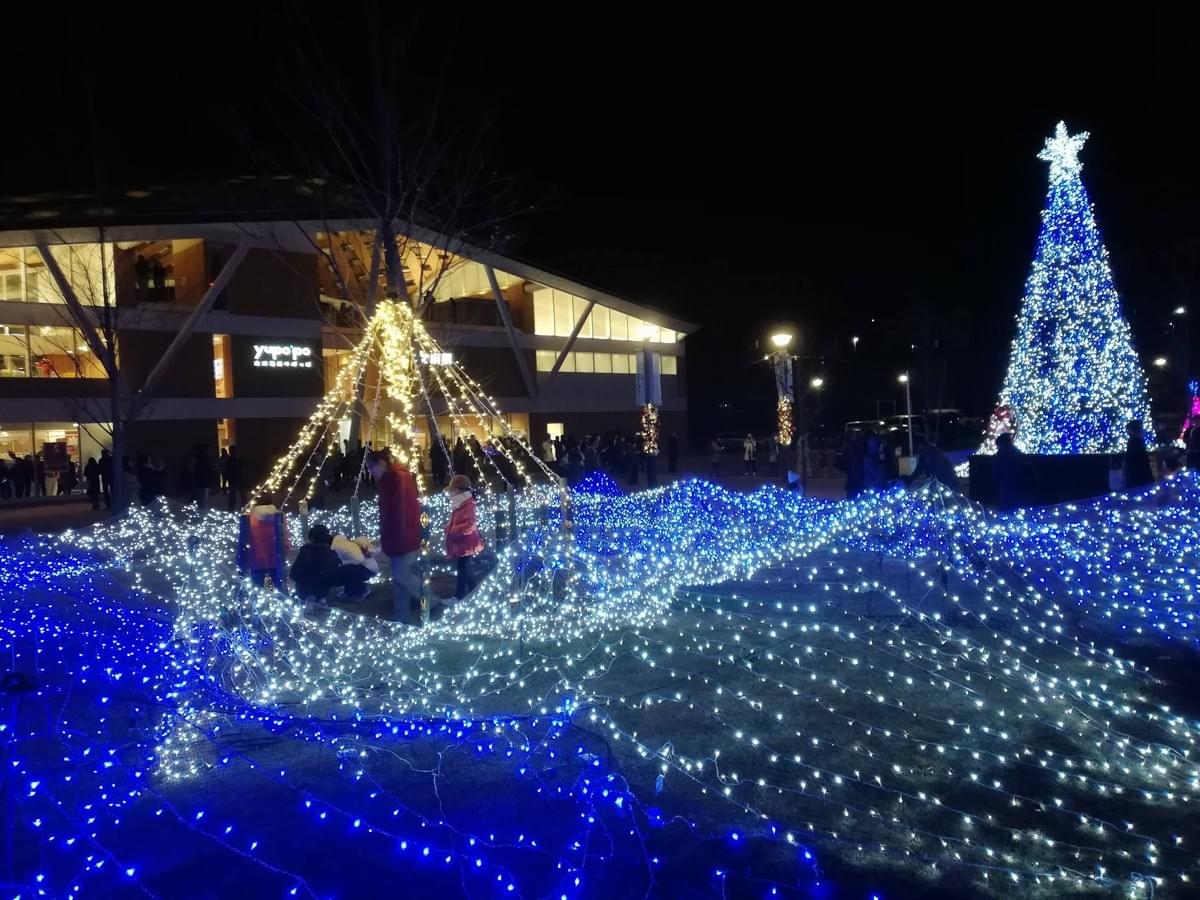
Umihotaru (lit. "sea fireflies"), are miniscule bioluminescent crustaceans that inhabit the seas of Japan, bathing coastal shallows in an evanescent glow whenever they are disturbed. At this winter light-up, tens of thousands of Christmas lights illuminate the plaza in front of Onagawa Station, resembling the glow of umihotaru floating in the sea at night.
Despite Onagawa being a very small town, the station area here is actually a great spot for a low-key night out, with several pubs and izakaya in the shotengai across the street from the station offering delicious food and drink, like Bar Sugar Shack and craft beer pub Garuya. Onagawa Station even has its own onsen bathouse, the perfect place to warm up after being out in the cold enjoying the illumination.
Hours: 16:30–22:00
Admission: Free
Details: nihon-kankou.or.jp
Location: The plaza in front of Onagawa Station. Map here.
Access: Just outside Onagawa Station
8. Sendai Pageant of Starlight
仙台光のページェント
Through January 11
Central Sendai
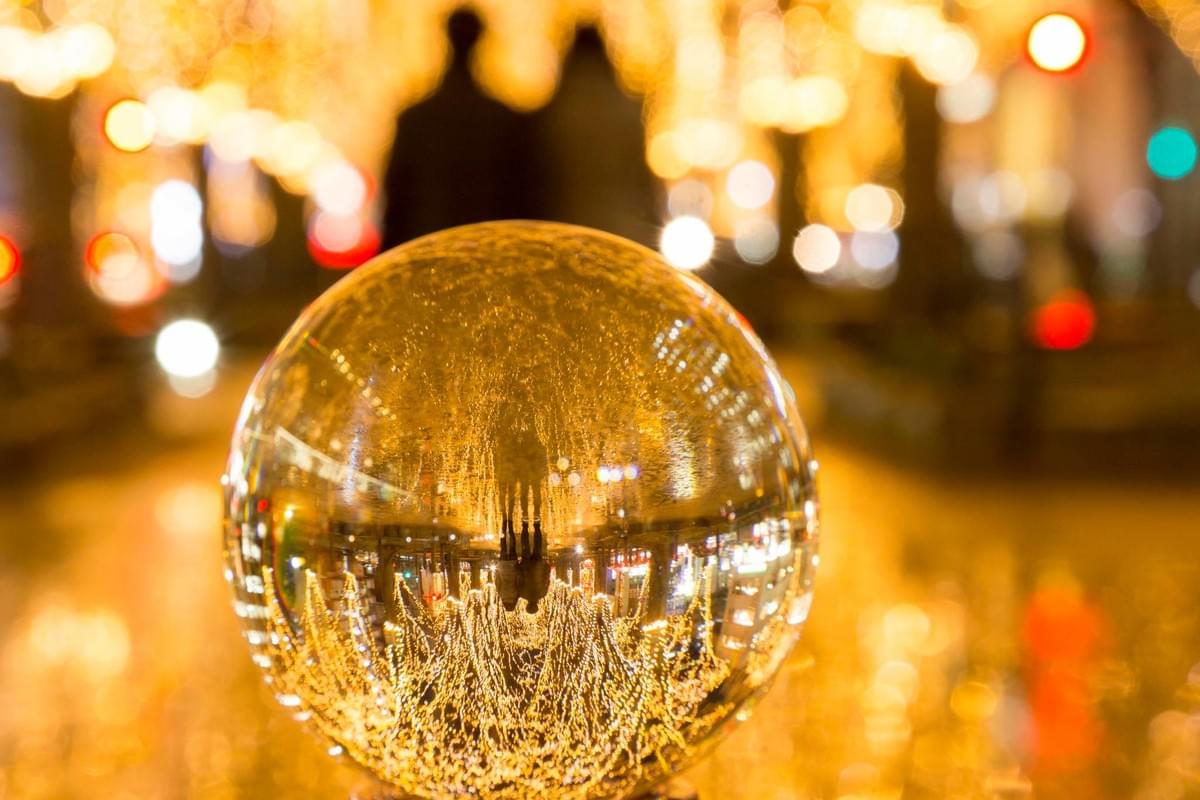
Some worried it would be cancelled, but the Pageant of Starlight is officially on for 2020! Though some of the events associated with the Pageant (like the Santa parade) have been cancelled this year due to concerns over coronavirus, the main attraction, the light-up of the zelkova trees along Jozenji-dori Avenue, will be as bright and festive as ever. In fact, this year they've extended the light-up through mid-January, keeping that holiday cheer around a bit longer than in regular years.
Hours: 18:00–22:00 weekends & holidays, 19:00–22:00 weekdays. Special dates: Christmas Eve (December 24) 19:00~23:00, New Year's Eve (December 31) 19:00–24:00.
Closed days: Weekdays January 1–8
Admission: Free
Official website: sendaihikape.jp
Location: Along Jozenji-dori Avenue (定禅寺通). Map here.
Access: 1-minute walk from Kotodaikoen Station
9. Ogawara Sakura Illumination
おおがわら桜イルミネーション
Through January 11
Ogawara, Miyagi

The Hitome Senbonzakura in Ogawara is Miyagi's most famous cherry blossom spot. Though the blossoms won't be back until spring, Ogawara reprises their delicate blush in winter with pink Christmas lights wrapped around the famous cherry trees.
Hours: 17:00–22:00
Admission: Free
Details: town.ogawara.miyagi.jp
Location: Along the Shiroishi River between the Ogata Bridge and the Suehiro Bridge (白石川右岸桜堤の尾形橋ー末広橋間). Map here.
Access: 3-minute walk from Ogawara Station
10. One Line: Kesennuma Christmas Illumination Project
One Line~気仙沼クリスマスイルミネーションプロジェクト~
Through January 11
Kesennuma, Miyagi
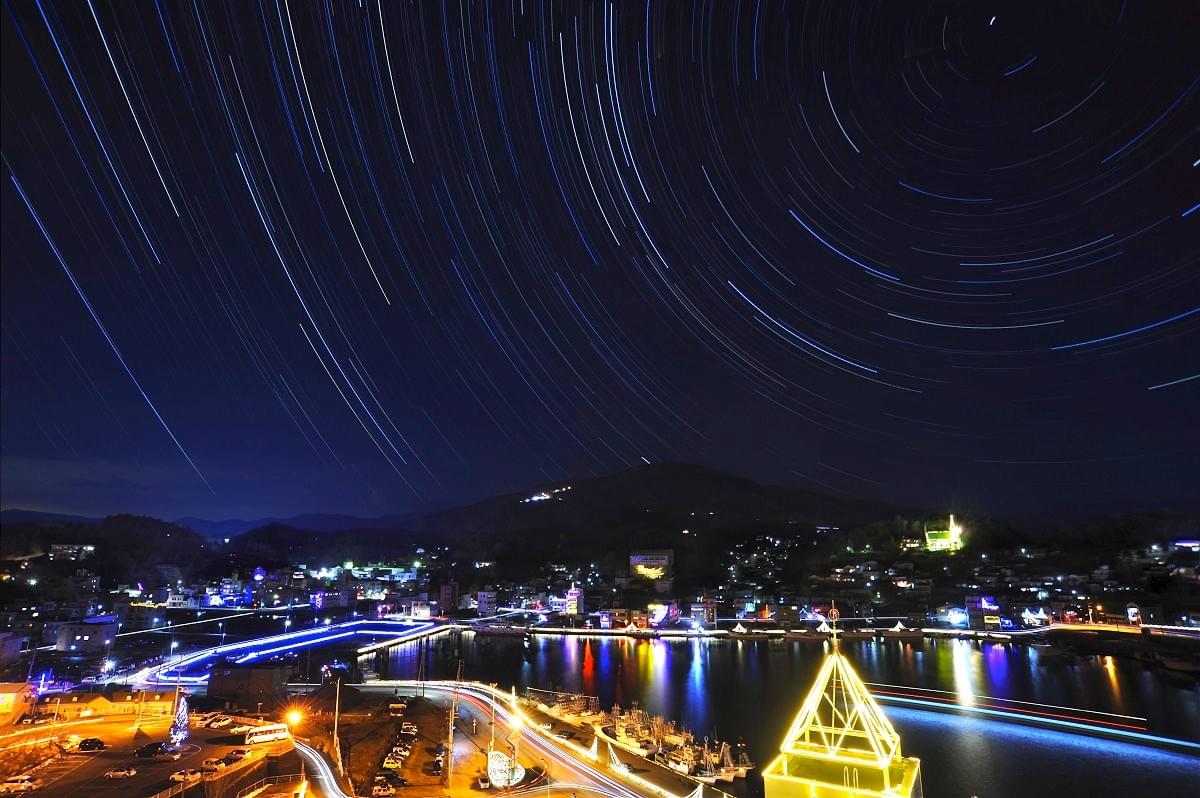
One Line is an annual winter light-up event in Kesennuma, started after the 2011 Great East Japan Earthquake to help lift the spirits of residents. This year too, the event aims to lift everyone's spirits in the face of the ongoing pandemic. Cheerful illuminations will take place at several venues across the city, and local residents are invited to get involved by decorating the outside of their homes as well.
Hours: 18:00–22:00
Admission: Free
Official website: kesennuma-christmas.com
Location: Various locations throughout the bay area of Kesennuma City, including Umi no Ichi (海の市) and Kesennuma City Hall (気仙沼市役所). Maps here.
Access: On foot or by bus from Kesennuma Station. Exact route varies by destination.
11. The National Treasures of Chugu-ji Temple
東日本大震災復興祈念 奈良・中宮寺の国宝展
Through January 12
Central Sendai

Chugu-ji is a temple in Nara founded in the seventh century. Once the palace of the mother of Prince Shotoku, it was converted into a temple, and later an imperial convent, following her death. The temple is home to two National Treasures as well as many other fine works of Buddhist art. One of these National Treasures, the Statue of Pensive Bodhisattva, will be displayed in Tohoku for the first time ever at this exhibition. Many of the temple's lesser-known treasures will also be displayed, as will a replica of the Chugu-ji's other National Treasure, the Tenjukoku Mandala Shucho.
Hours: 9:30–17:00 (last entry 16:30)
Closed: Mondays (except Nov 23 & Jan 11), plus Nov 24, Dec 28–Jan 4
Admission: ¥1,500 adults, ¥1,300 college students, ¥750 children ages elementary to high school
Language: Limited English
Details (English): pref.miyagi.jp
Location: The Miyagi Museum of Art (宮城県美術館). Map here.
Access: 5-minute walk from International Center Station
12. Masterpieces of Antique Kokeshi: Selections from the Kamei Shogo Collection
亀井昭伍切コレクションより「古作こけし名品展」
Through January 17
Central Sendai
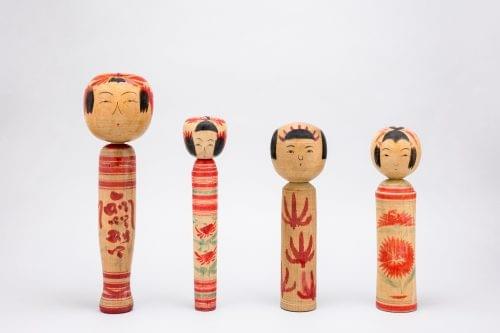
Kamei Museum is a bastion of kokeshi doll culture located in the heart of Sendai City. They boast a large private collection, and also host exhibitions of other kokeshi collections from around the world. Masterpieces of Antique Kokeshi is an exhibition of pre-WWII kosaku kokeshi from the museum's private collection.
Hours: 10:00–16:00 (last entry 15:30)
Closed days: Mondays (open if Monday is a national holiday), December 28–January 4
Admission: ¥240, seniors 65+ free
Event details: kameimuseum.or.jp
Museum official website (English): kameimuseum.or.jp/english
Location: Museum of Kamei Collection (カメイ美術館). Map here.
Access: 4-minute walk from Itsutsubashi Station
13. Jun Sugimura: The Legend of the Presence and Absence of Objects "Rhythm of the Stillness"
杉村惇 作品展 存在と空間の伝説 ~静寂の韻律~
Through January 17
Shiogama, Miyagi
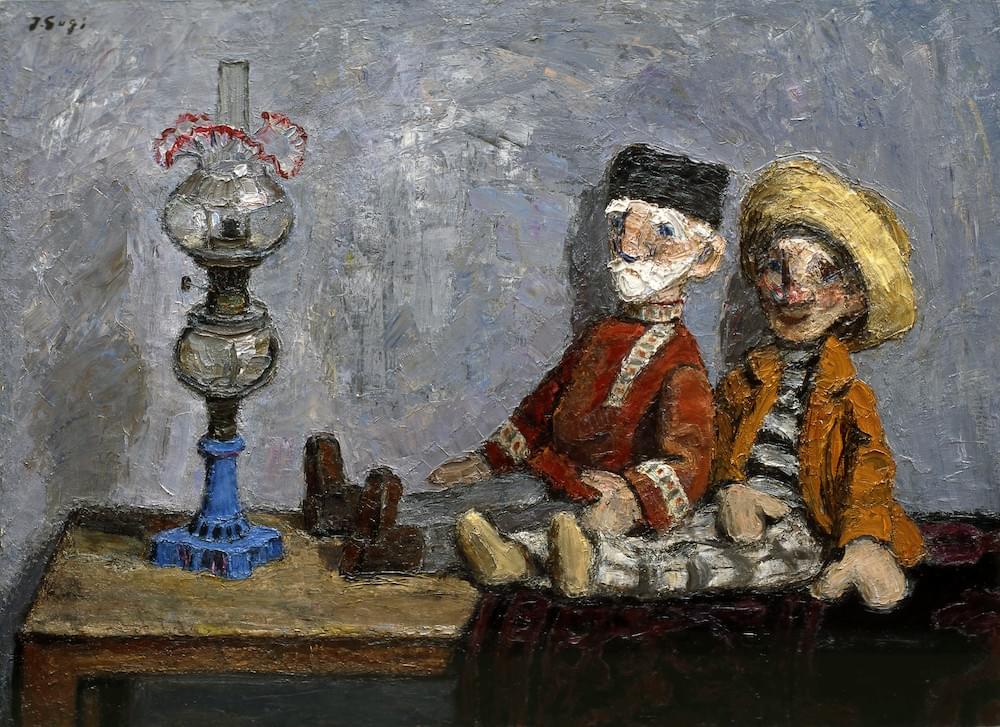
"Made possible with the generous support from the City of Sendai and the Museum of Kamei Collection, we exhibit a selection of sketches and oil paintings based on the theme of 'stillness'.
This collection demonstrates the ingenuity and diligence of Sugimura, mainly from the 1960s to the 1980s, during a period which he was at the prime of his career, and at a turning point in his pursuit of color, rather than composition. His work, which include his daily sketches of pomegranates, show his passion for creating art and his experimental, trial-and-error approach to composition."
—Shiogama Sugimura Jun Museum of Art
Hours: 10:00-17:00 (last entry 16:30)
Closed days: Monday* & New Year's holiday period
*If Monday is a holiday, the museum will be open Monday and closed the following day.
Admission: ¥400 adults, ¥350 university and high school students, children ages junior high and younger free
Language: English OK. English-speaking volunteers are on hand to guide you through the exhibit
Details (English): sugimurajun.shiomo.jp
Location: Shiogama City Sugimura Jun Museum of Art (塩竃市杉村惇武術館). Map here.
Access: 9-minute walk from Hon-Shiogama Station
14. The Final Illumination of the Sant Juan
サン・ファン・イルミネーション 2020 -The Final-
Through January 24
Ishinomaki, Miyagi
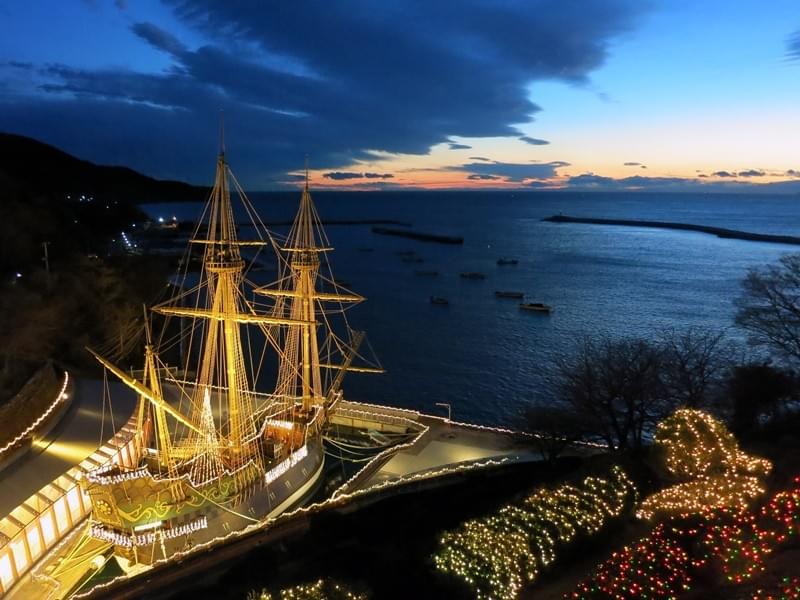
Sadly, will be the last-ever illumination of the ship at the Sant Juan Bautista Museum. The ship is a full-scale model of the Sant Juan Bautista, the samurai-era sailing ship which carried the Keicho Mission (a voyage commissioned by Date Masamune to establish trade with Spain) envoy some 400 years ago. Due to damage and wear, the full-scale model of the San Juan Bautista ship will be decommissioned in early 2021. Don't miss out on this final chance to see the ship decked out in festive lights!
Hours: 16:30–20:30 (illumination)
Admission (illumination viewing): Free
Admission (museum): ¥350 adults, children ages high school & younger free
Details: santjuan.or.jp
Museum details (English): santjuan.or.jp
Location: Miyagi San Juan Bautista Museum (サン・ファン館). Map here.
Access: 25-minute walk from Watanoha Station
15. Migratory Birds at Izunuma & Uchinuma
伊豆沼・内沼の野鳥
Through early February
Tome, Miyagi
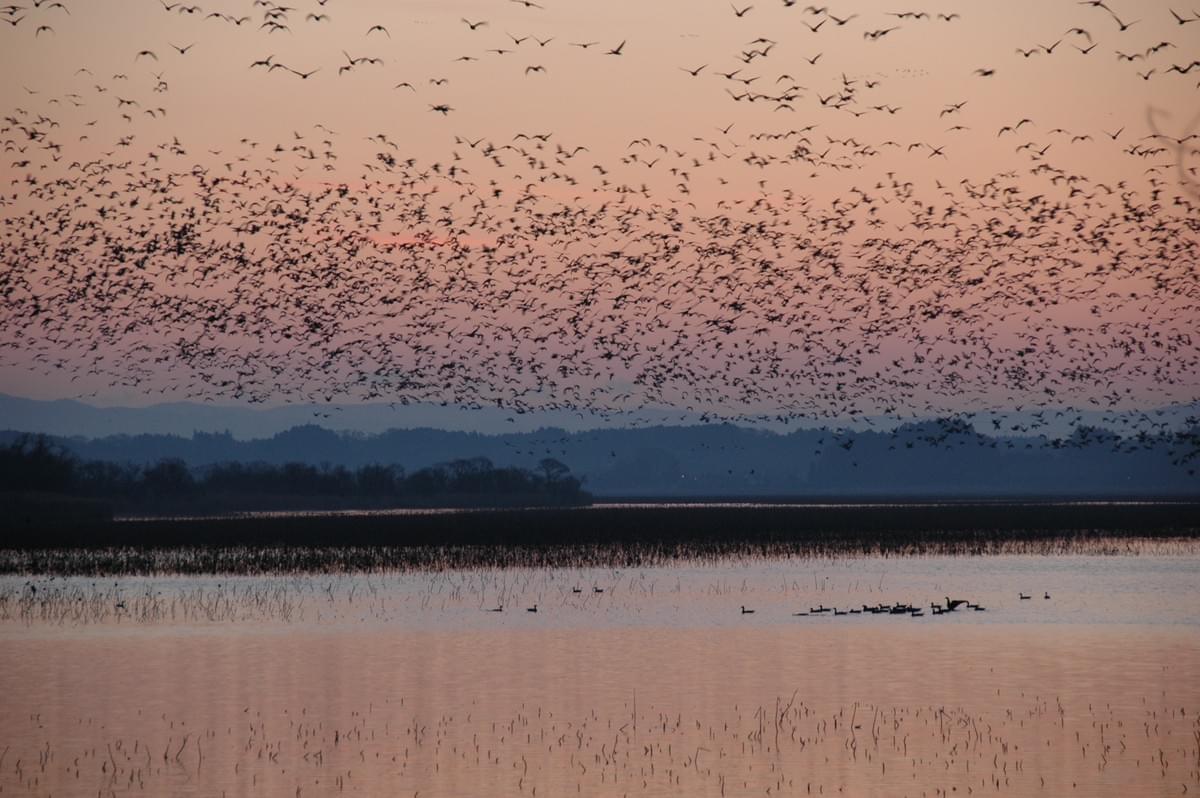
Lakes and marshes in Tome and Kurihara, Miyagi have been designated protected wetlands under the international Ramsar Convention. Every winter, thousands upon thousands of migratory ducks, geese, and swans fly here from as far away as Siberia to overwinter in the warm (compared to Siberia, at least) climate of Miyagi. During the day, the birds scavenge for leftover grains in the surrounding rice paddies. At night they flock to the lakes and marshes, where they can sleep safely, away from most predators.
Visitors can come see the birds at any time, but the most spectacular views are around sunrise and sunset, when the birds take flight en masse, filling the sky with their graceful movement. Those who want to feed the birds can come midday, when hungry loafers gather near the shore, waiting for handouts from friendly humans. Visitors are welcome to feed the birds but are asked to refrain from feeding them anything that might be bad for their health, so it's best to play it safe and feed the birds the specially formulated esa (feed) available for purchase at lakeside stands and local product markets near the lakes.
Time: 24/7, but best birdwatching time is around sunrise and sunset
Admisison: Free. Bird feed ¥100 per bag.
Details: tohoku.env.go.jp
Bird status: kurihara.kb.net
Location: Lakes Izunuma, Uchinuma, and Naganuma (伊豆沼、内沼、長沼). Map here (Lake Izunuma in pinned, with Lake Uchinuma and Naganuma just a few hundred meters away to the southwest and southeast, respectively.)
Access: Lake Izunuma is the most convenient access by public transportation—a 10-minute walk from Nitta Station.
16. Butterfly Stamps of the Americas: Selections from the Kamei Shogo Collection
亀井昭伍切手コレクションより「北米・中米・南米の蝶切手」
Through February 28
Central Sendai
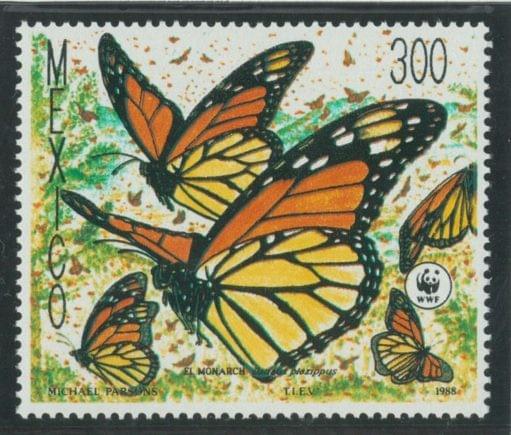
The butterfly stamp exhibition is a yearly event at Kamei Museum, with the particulars of the theme changing each year so that even regulars to the event will have something new to see each time. This time around, the theme is butterfly stamps from the Americas, from antique stamps to contemporary ones. Butterfly fans may also want to check out the museum's permanent butterfly collection of 14,000 preserved specimens from around the world.
Hours: 10:00–16:00 (last entry 15:30)
Closed days: Mondays (open if Monday is a national holiday), December 28–January 4
Admission: ¥240, seniors 65+ free
Event details: kameimuseum.or.jp
Museum website (English): kameimuseum.or.jp/english
Location: Museum of Kamei Collection (カメイ美術館). Map here.
Access: 4-minute walk from Itsutsubashi Station
17. Zao Snow Monster Light-Up
蔵王樹氷ライトアップ
Through February 28 (Fridays & weekends only January 8–25)
Zao Onsen, Yamagata
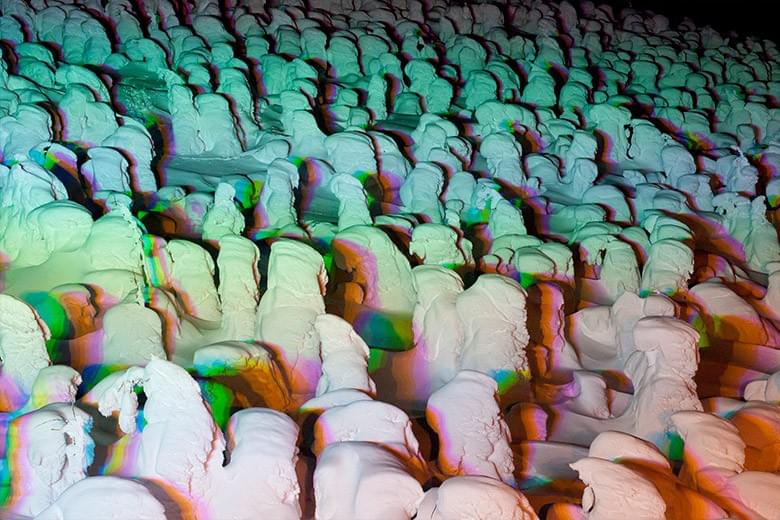
Snow monsters are a phenomenon that occur only in places with just the right combination of snow, wind, and frigid temperatures. Under the right conditions, trees get covered in layer upon layer of ice and snow, transforming them into phantasmagoric shapes. Mount Zao is one of the best places to see these "creatures." The most convenient way to access them is via the Zao Ropeway at the Zao Onsen Ski Resort. Visitors can simply ride the gondola up to take in the view from the observation deck at the top, or take a short walk from the gondola station to trapse around the snow monsters and see them up close. At night, the chimerical appearance of the snow monsters is played up with colorful lighting.
Hours: 17:00–21:00
Closed days: Tuesdays (except December 29), weekdays (except Friday) January 8–25
Fee: Admission to the light-up is free, but you'll need to ride the ropeway to get there, which costs ¥3,000 round-trip.
Snow monster details (English): visitmiyagi.com
Official page: zaoropeway.co.jp
Location: Zao Onsen Ski Resort (蔵王温泉スキー場). Map here.
Access from Sendai Station: 85 minutes by bus from Sendai Station, followed by a short walk and gondola ride. From Sendai Station East Exit bus stop 76 (仙台駅東口76番), board bus bound for Zao Onsen Bus Terminal (蔵王温泉バスターミナル). Alight at Zao Onsen Bus Terminal. From the bus terminal, walk to the Zao Ski Resort building, where you can catch the gondola. Reservations are required for the bus; see details here. If you can't make a reservation for the Sendai bus or don't want to spend the night, consider catching the one from Yamagata Station, which doesn't require reservations. Note that the Sendai-bound departs too early for you to catch the light-up on a day trip. If you're coming direct from Sendai, you'll either need to spend the night in Zao Onsen, or return via the Yamagata Station–bound bus.
Access from Yamagata Station: About 35 minutes from Yamagata Station. From bus stop 1 in front of Yamagata Station (山形駅前一番), board bus bound for Zao Onsen (蔵王温泉). Alight at Zao Onsen Bus Terminal (蔵王温泉バスターミナル), the final stop. Timetables here.
18. Kearashi of Kesennuma Bay
気仙沼の気嵐
Through late February
Kesennuma, Miyagi

Kearashi is a kind of ice fog, a rare winter phenomenon. When the air temperature drops very low (around -20° Celsius) but the surface of a body of water remains relatively warm, vapor rising off the water freezes into wisps of fog so thick, it seems as if one could reach out and grasp it. An easily accessible place known for kearashi is Kesennuma Bay. It's a popular sight among local photography enthusiasts, who gather early in the morning to capture it on camera.
Time: Best viewing is for about 1 hour around sunrise
Fee: Free
Details: kesennuma-kanko.jp
Location: Pretty much anywhere with good views of Kesennuma Bay (気仙沼湾). Map here. Recommended viewing spots with convenient access include the the seawall below Kesennuma Plaza Hotel, and the area around the Kesennuma Fishing Port/Kesennuma Fish Market.
19. Lake Inawashiro Shibukigori
猪苗代湖しぶき氷
Inawashiro, Fukushima
Early January–late February
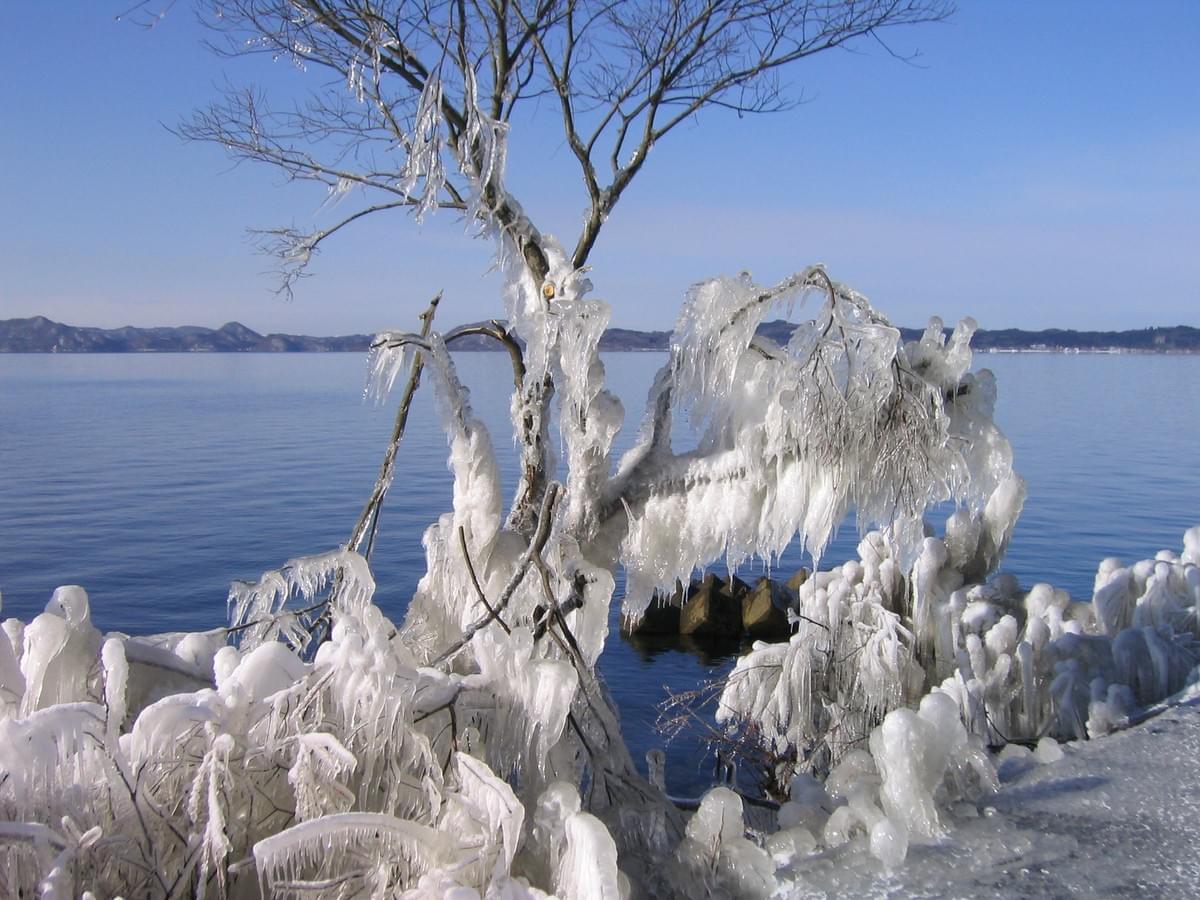
The colder and windier the weather gets, the more beautiful this "dancing ice" becomes. Shibukigori are natural ice sculptures formed as a result of the harsh winter conditions in the area, and are at their best when the weather has been frigid and windy.
Hours: Always open
Admission: Free
Details: kanko-koriyama.gr.jp
Location: Near Tenjinhama (天神浜). Map here.
Access: 3.4 kilometers from Sekito Station. This area gets heavy snow in winter, so how long it takes to walk depends on road/sidewalk conditions.
20. Snow monster snowcat & backcountry tours
みやぎ蔵王の樹氷めぐり
Through March 4
Zao-machi, Miyagi

Sumikawa Snow Park serves as the base for snow monster sightseeing on the Miyagi side of Mount Zao. Snowcat vehicle tours offer a convenient way to see them without having to do any hiking or be out in the cold for long. If you decide you want a more adventurous way to see the snow monsters, Sumikawa Snow Park also offers backcountry snowshoeing, snowboarding, and/or skiing tours through M's Guide.
Time: 2 departures per day, at 11:00 & 13:30
Snowcat tour fee: From ¥5,000 adults, ¥4,000 children.
Backcountry tour fee: From ¥4,500. Fee varies by course.
Reservations: Required
Snow monster details (English): visitmiyagi.com
Sumikawa Snow Park details (English): visitmiyagi.com
Backcountry tour details (English): visitmiyagi.com
Location: Miyagi Zao Sumikawa Snow Park (宮城蔵王すみかわスノーパーク). Map here.
Access: By free shuttle bus, 125 minutes from Sendai Station or 40 minutes from Togatta Onsen. Reservations are required, see here for details.
21. Naruko Onsen Ekimae Illumination
鳴子温泉駅前イルミネーション
Through March 31
Naruko Onsen, Miyagi
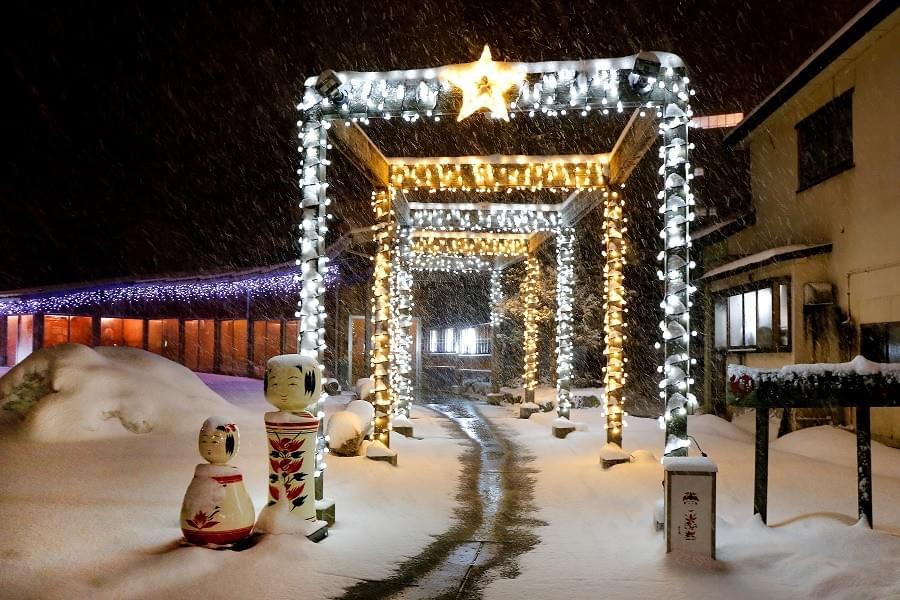
A cheery winter illumination in a great location—Naruko Onsen! The village's kokeshi doll motif and blanket of snow add a dose of kawaii and wintery charm to this quaint illumination. After enjoying the lights, warm up with a dip in one of the town's many onsen. The plaza where the illumination is being held has a free teyu hand bath, and there's a free ashiyu foot bath at Hotto Park across the street. Full-body baths are available at numerous public bathouses and inns throughout the village.
Hours: 17:00–24:00
Admission: Free
Details: welcome-naruko.jp
Location: Naruko Onsen Ekimae Yu-meguri Plaza (鳴子温泉駅前ゆめぐり広場). Map here.
Access: 3-minute walk from Naruko-Onsen Station
22. Shiroishi Ski Resort open
スキー場開き
Through late March
Shiroishi, Miyagi
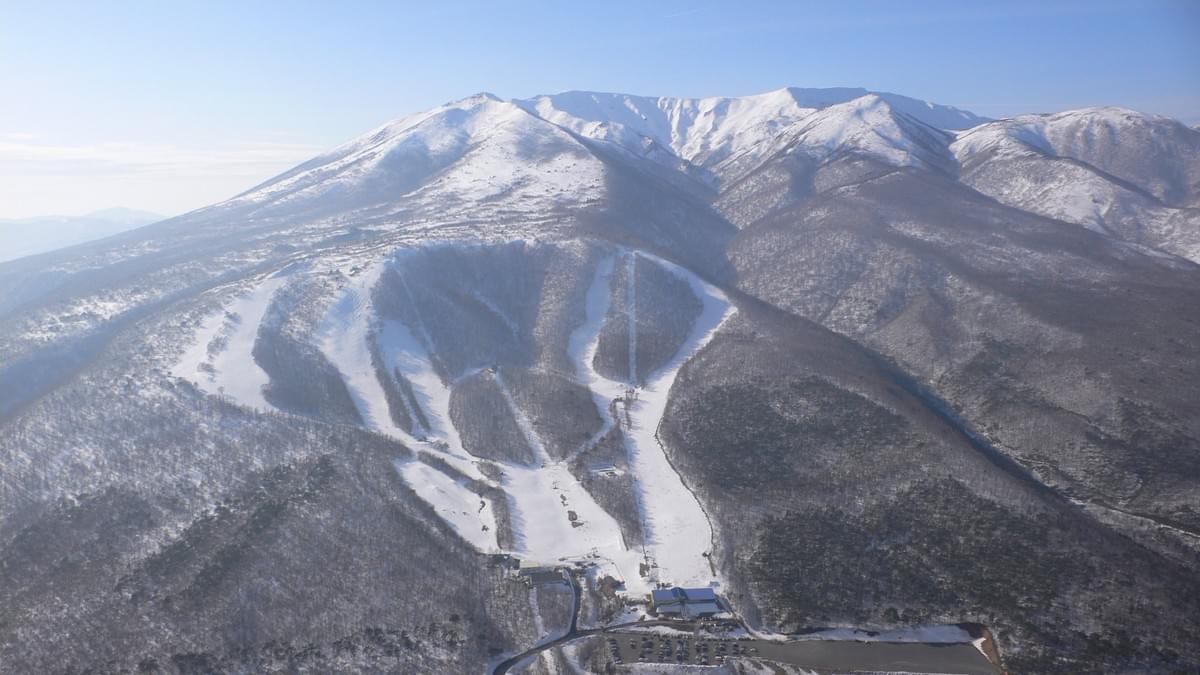
Hit the slopes and support a good cause! Shiroishi Skijo is a ski resort in southern Miyagi run by the non-profit organization Fubo Azalea, dedicated to the promotion of environmental stewardship. It's also home to the steepest piste in Miyagi, and offers free shuttle bus service to and from the nearest two train stations.
Hours: 8:30–16:30
Fee: Varies by ticket type. An adult 1-day pass is ¥3,500
Details (English): visitmiyagi.com
Official website: nposki.com
Location: Miyagi Zao Shiroishi Ski Resort (みやぎ蔵王白石スキー場). Map here.
Access: 40 minutes by free shuttle bus from Shiroishi Station or Zao-Shiroishi Station. Bus runs weekends and holidays. Reservations required. See here for details.
23. Sendai Hatsu-uri
仙台初売り
January 2
Central Sendai
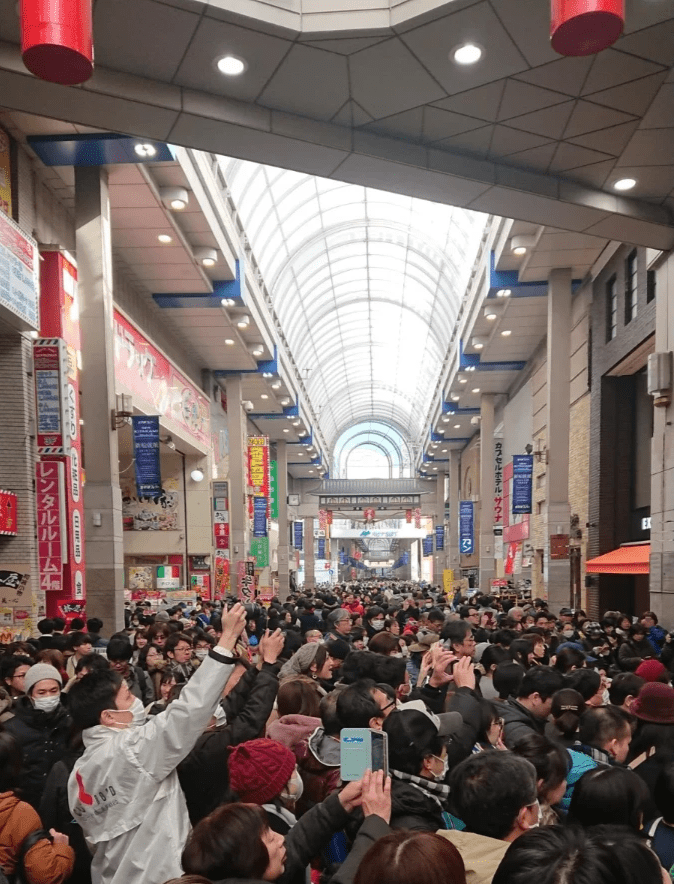
Japan's biggest hatsu-uri event! Hatsu-uri is a tradition in the same vein as Black Friday in the US. Shoppers line up at the crack of dawn for a chance to snag bargains and giveaways at their favorite shops. Fukubukuro, often called "lucky bags" in English, are another big draw. Fukubukuro are bags full of mystery items whose total MSRP value is greater than the price of the bag, so some see them as a real value.
Due to concern over coronavirus, some shops are altering their hatsu-uri practices this year, adopting measures such as fukubukuro by reservation only. If there's a particular shop you have your heart set on for hatsu-uri, please check with them to find out how they'll be handling the 2021 sale.
Hours: From whenever each shop opens on January 2
Admission: Free
Official website: sendaihatsuuri.com
Location: Shopping arcades throughout downtown Sendai. Map here.
Access: A short walk from Sendai Station
24. New Year's in Sendai: A Seasonal Exhibition
季節展示「仙台の正月」
January 5–31
Central Sendai
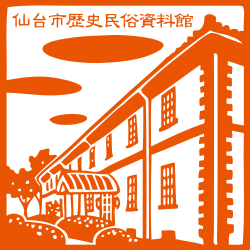
Sure, you've experienced what a modern-day Sendai New Year's is like, but have you ever wondered about the New Year's celebrations of yore? This exhibition at the local history museum will show you what Sendai New Year's celebrations were like in years past. Unlike most exhibitions about this kind of thing, which look at traditions on a nationwide level, this exhibition focuses on what New Year's used to be like specifically in our area.
Hours: 9:00–16:45 (last entry 16:15)
Closed days: Monday (If Monday is a holiday, the museum will be open Monday and closed the following day.)
Admission: ¥240 adults, ¥180 high school students, ¥120 children ages elementary to junior high
Language: Limited English
Details: sendai-c.ed.jp
Location: Sendai City Museum of History & Folklore (仙台市歴史民俗資料館館). Map here.
Access: 7-minute walk from Tsutsujigaoka Station
25. Tsurushi Hanabi daytime "fireworks"
開運花火~長旗花火~
January 10
Sukagawa, Fukushima

An unusual religious ceremony with its origins in the Edo period. Large banners are shot up into the air in prayer, typically for for a good harvest or peace and prosperity of the household.
Time: 8:20–10:30
Admission: Free
Official website: sci-iwase.com
Location: The launch point is the sports field at Iwase Yukyu no Sato (いわせ悠久の里 運動広場). Map here.
Access: 20 minutes by bus from Sukagawa Station (須賀川駅), followed by a 20-minute walk. Board a 30-2 Machimoriya via Yazawa (矢沢経由町守屋) line bus bound for (北横田・町守屋), alight at Iwase Shiten (岩瀬支店) bus stop. Timetables here.
26. Sendai Comiket #262
仙台コミケ256
January 11
Miyagino Ward, Sendai
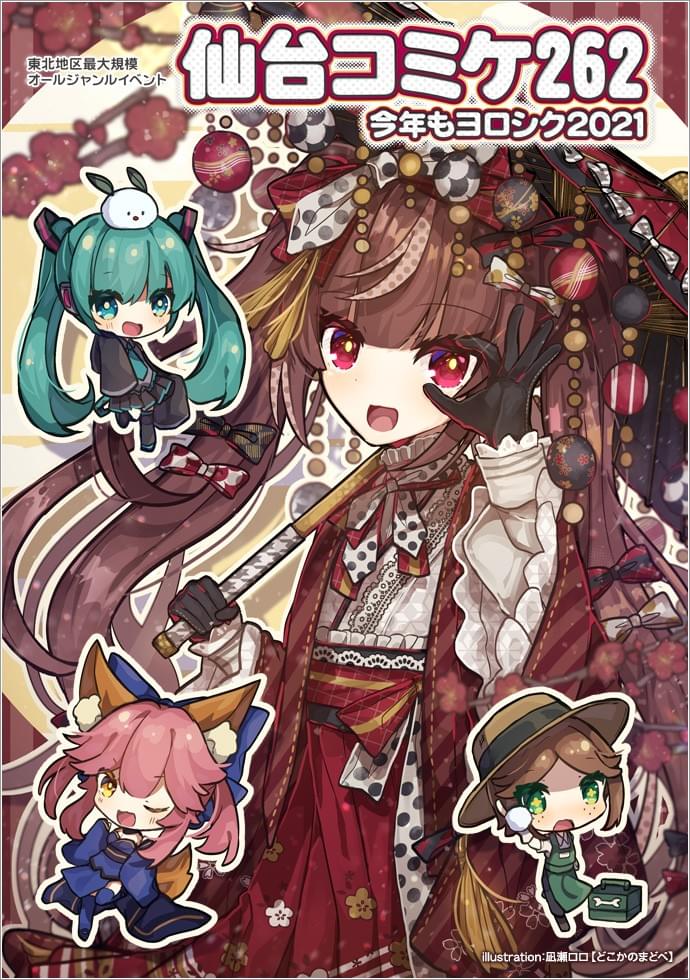
Sendai Comiket is back! Sendai Comiket is similar to other Comikets in that it's a gathering of cosplay and dojinshi fans. But unlike the bigger Comikets, the Sendai one is held several times thoughout the year so it's much less crowded.
Hours: 11:00–15:00
Admission: TBD (usually about ¥800 at the door)
Comiket #262 details: youyou.co.jp
Sendai Comiket details (English): sendaimotions.com/blog/sendaicomiketreport
Location: Yume Messe Miyagi (夢メッセみやぎ). Map here.
Access: 15-minute walk from Nakano-Sakae Station
27. Dontosai at Osaki Hachimangu
大崎八幡宮のどんと祭
January 14
Central Sendai
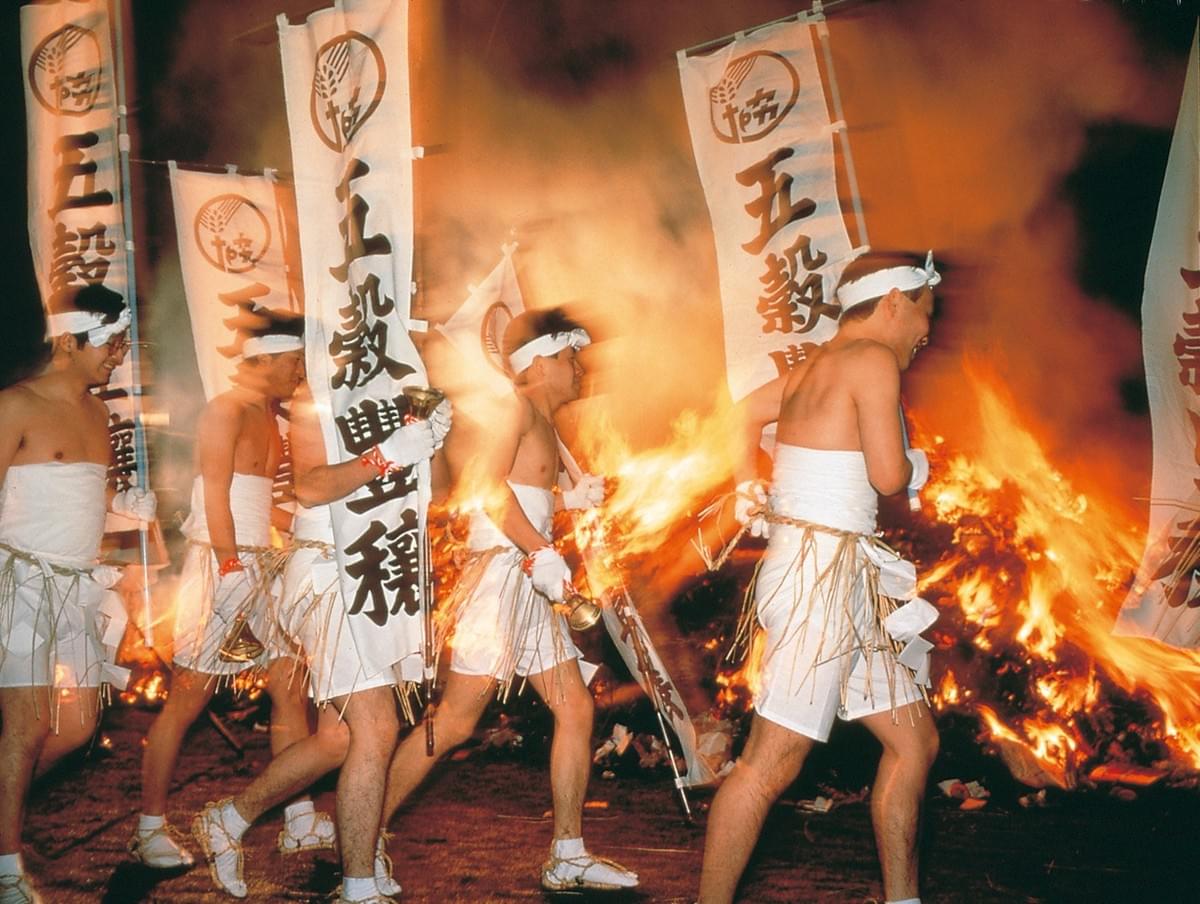
A traditional New Year's purification ritual unique to Miyagi. Small dontosai festivals take place at local shrines throughout the prefecture, but this one at Osaki Hachimangu Shrine is the biggest of them all. Men and women clad in white dontosai attire march silently to the temple from areas all over the city to take part in the purification. A large holy bonfire is also lit, where participants and spectators alike can dispose of their old New Year's decorations and shrine omamori properly, by burning them in the purifying flames.
Hours: 9:00–22:00
Admission: Free
Official event page: oosaki-hachiman.or.jp
Details (English): visitmiyagi.com
Location: Osaki Hachimangu Shrine (大崎八幡宮). Map here.
Access by rail: 11-minute walk from Tohokufukushidai-Mae Station.
Access by bus: By city bus from Sendai Station, or by shuttle bus from International Center Station (国際センター駅) and the Izumi Ward Office (泉区役所) next to Izumi-Chuo Station. At Sendai Station (仙台駅), board bus at the West Exit Bus Pool 16. Buses depart every 4 to 10 minutes until 20:30. For shuttle bus info, see official event page link above.
28. Kattamine Shrine Akatsuki Mairi
刈田嶺神社暁(あかつき)詣り
January 14
Zao-machi, Miyagi

A traditional New Year's purification ritual in southwestern Miyagi. Men turning the "unlucky" age of forty-two parade a giant shimenawa rope around town. After making the rounds, the men haul it up to a five-hundred-year-old pair of meoto cedars on the grounds of Kattamine Shrine, where they bind the trees together with it. The ritual considered a kind of exorcism, and is believed to bring peace and prosperity to the men's households for the coming year. In addition to the shimenawa ritual, the event also features kagura dance and a dontosai fire purification ritual.
Hours: 17:00–22:00. The rope ritual usually takes place 19:00–20:00.
Admission: Free
Details: miyagi-kankou.or.jp
Location: Kattamine Shrine (刈田嶺神社). Map here.
Access: 25-minute walk from Higashi-Shiroishi Station
29. Snowshoe trekking with Kotori House
雪上トレッキング
January 17–March 14
Zao-machi, Miyagi

Enjoy a guided snowshoe tour of the winter landscape of the Mount Zao area, including winter wildlife observation. No reservations are necessary, and gear rental is included!
Time: 10:00–12:00 (Please arrive by 9:50 to register)
Fee: 300 (includes snowshoe rental)
Reservations: None needed
Details: mifi.main.jp
Location: Meeting point is Kotori House (ことりはうす). Map here.
30. Carnation picking experience
カーネーション摘み取り&花あそび体験
January 24
Natori, Miyagi
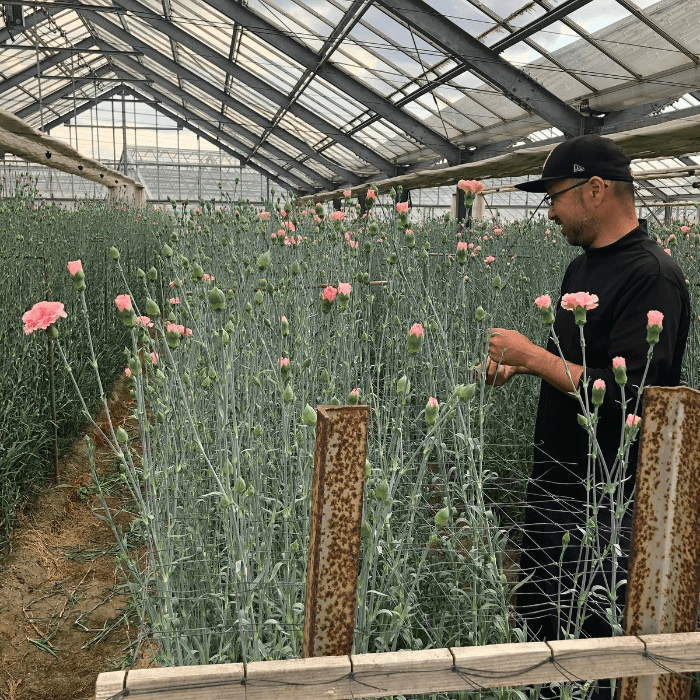
Natori is the number-one carnation-growing area in Tohoku, a livelihood of locals for over eighty years. This special experience allows members of the general public to not just view one of Natori's carnation greenhouses, but also go flower picking there!
Hours: 10:00–12:00
Fee: ¥2,800 adults and children ages junior high and up, ¥1,400 elementary schools students, children ages preschool and younger free
Reservations: Required. Can book via phone, website, or email.
Event details: kankou.natori.miyagi.jp
Horticulturalist details: twitter.com/natoricarnation
Location: Sugai Horticulture (菅井園芸) in the Kozukahara (小塚原) area of Natori. Map here. Sugi Horticulture is private property, so exact address and access details will be provided once you've booked your reservation.
Access: Hard to say without knowing the exact location, but it will likely be accessible on foot from Mitazono Station, or by bus from Natori Station.
31. Yamagata Snow Festival
やまがた雪フェスティバル
January 30–31
Sagae, Yamagata
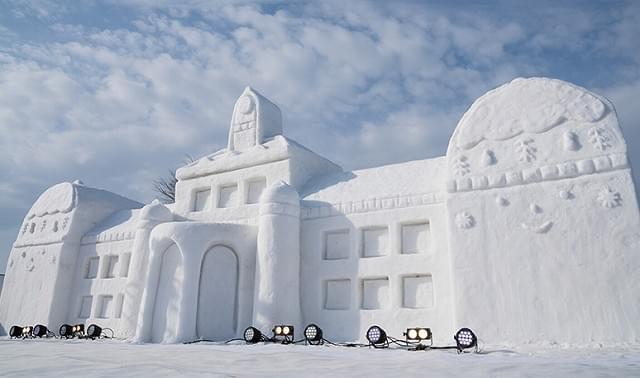
*UPDATE: Due to concern over the recent uptick in the number of coronavirus cases, the Yamagata Snow Festival has been suspended for 2021. For details, see the official festival website (link below).*
A winter festival in snow country! Features evening illuminations, performances on a stage made of snow, snowtubing, and more. As a coronavirus-prevention measure, this year the festival will be by reservation only.
Hours: 16:30–20:00 (Jan 31), 10:00–20:00 (Feb 1), 10:00–16:00 (Feb 2)
Admission: Free
Reservations: Required. Must be received by by January 4. Can book online.
Official website: yamagata-yukifes.jp
Location: Mogamigawa Furusato Park (最上川ふるさと総合公園). Map here.
Access: 14-minute walk from Sagae Station

